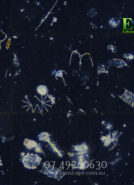Water contains a myriad of fine particles which can interfere with its use which then requires filtration to remove. Particle size distribution allows for a count of various size particles in a given water volume normally 1ml. This allows for targeted filtration process to be developed for the required water quality. We can provide particle size distributions at required size limits or our standard process. We can also provide PSD on oils, lubricants and other emulsions. Results are usually available in 48 hours.
Particle size distribution testing is a technique used to measure the size and distribution of particles in a given sample. This type of testing is commonly used in a variety of industries, including pharmaceuticals, food and beverage, and cosmetics, to ensure that products meet specific particle size requirements.
The most common method of particle size distribution testing is laser diffraction. In this method, a laser is directed at a sample, and the diffraction patterns are analyzed to determine the size and distribution of particles. Other methods include sieve analysis, which uses a series of sieves to separate particles based on size, and microscopy, which uses a microscope to visually examine particles.
The results of particle size distribution testing are typically reported in terms of particle size and distribution. Particle size is typically reported as a median diameter, which is the diameter at which 50% of the particles are smaller and 50% are larger. Distribution is typically reported as a percentage of particles within a specific size range.
One of the key benefits of particle size distribution testing is that it allows manufacturers to ensure that products meet specific particle size requirements. For example, in the pharmaceutical industry, drugs must be of a specific particle size in order to be effective. Similarly, in the food and beverage industry, particle size can affect the texture and taste of products.
Another benefit of particle size distribution testing is that it can help identify and troubleshoot production issues. For example, if a product is consistently failing to meet particle size requirements, particle size distribution testing can be used to identify the source of the problem and develop solutions.
Overall, particle size distribution testing is an important tool for ensuring the quality and consistency of a wide range of products. With the help of this technique, manufacturers can ensure that their products meet specific requirements and troubleshoot production issues.




